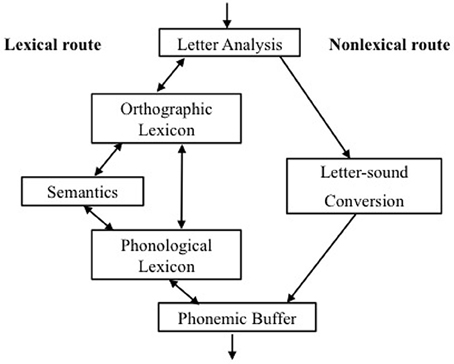fMRI 101
Course Overview & Intro to Dyslexia
Course Overview
Purpose
The purpose of this course is to create students with the fundamental knowledge and experience required to become neuroimaging scientists. At the end of this course students will have a confident understanding of neuroimaging physics, theory and statistical methods and be able to apply to carry out their own empirically driven and novel analyses. They will also be adept at presenting their findings to others within the scientific community.
Objectives
- Students will understand and be able to explain basic principles of physics as they relate to magnetic resonance imaging science.
- Students will be able to design an imaging study to answer novel questions about human cognition and anatomy.
- Students will be able to conduct their own novel analysis of a functional data set.
- Students will be able to interpret the results of their analysis and form sound conclusions based on these interpretations.
- Students will effectively present their investigation to their peers and potential mentors at a relevant conference.
Components
The following will be used to facilitate and guide learning throughout this course:
- Small group discussions
- Learning Activities
- Learning Assessments
- End of course conference and presentation
Outline
| Topic | Learning Activity | Assessment |
|---|---|---|
| Overview & dataset introduction | Hypothesis brainstorming | Literature Review |
| Experimental Design | CITI/IRB training | Hypothesis meeting |
| Neuroimaging Physics | Safety Training | MRI Level 1 certificate |
| Imaging Acquisition | Quiz | |
| CNS Metabolism & the HRF | Quiz | |
| Unix & Command line computing | Codecademy tutorial | For Loop assignment |
| Neuroimaging Software | Install AFNI | Accessing the Super |
| Structural Template | Installing ANTs | Build a Structural Template |
| Signal Preprocessing | Individual transformation montage | Scripts |
| Math in Neuroimaging | Khan Academy: Introduction to Matrices | |
| Deconvolution & Group Statistics | Group Results Image | |
| Extracting Results | Results Report | |
| Statistical Methods | Statistical Report | |
| Interpreting Results | Research Abstract | |
| Presenting Research | Poster Draft | Lab presentations |
| Additional tools for Neuroimager |
Materials
All materials used in this course (including the slides) can be found at http://bc-brains.com.
You will need to provide your own computer with a Unix based OS or kernel (essentially either Mac, Linux or Windows 10 with a developer add-on). The computers at the MRIF have most of this software pre-installed. Just get a ~10 Gb jump drive.
History of Dyslexia
The National Academy of Sciences
“Reading is essential to success in our society. The ability to read is highly valued and important for social and economic advancement… we are most concerned with the large numbers of children in America whose educational careers are imperiled because they do not read well enough to ensure understanding and to meet the demands of an increasingly competitive economy… In a technological society, the demands for higher literacy are ever increasing, creating more grievous consequences for those who fall short.”
Effects of Reading Skill
- Higher educational status
- Employment
- Wages earned

Dyslexia
- Dyslexia is one of many obstacles to learning to read.
- Incidence varies between studies, but most estimates range between 6-10% of individuals.
- Neurological in origin
- Difficulty learning to read accurately and fluently with poor decoding ability.
- Believed to be related to the phonological component of language, however there is growing support for a multifactorial approach.

Early Theory
Dr. Rudolf Berlin
- First appeared in 1887 in Dr. Rudolf Berlin’s book: Eine besondere art der wortblindheit (dyslexie) or A special kind of word blindness (dyslexia).
- Documented 6 cases of reading difficulty.
- Reported lesions in the supramarginal and angular gyri in postmortem examinations.

Samuel T. Orton
- "Strephosymbolia" or twisted symbols.
- Documented large numbers of school children who were unable to read despite normal IQ.
- Proposed a lack of hemispheric dominance.

Modern Theory
Three Theories
- Phonological Deficit Hypothesis
- Multifactorial Hypothesis
- Neural Noise Hypothesis
Phonological Deficit Hypothesis
Two primary pathways for reading:
- Phonologically mediated access (hooked on phonics)
- Direct access (sight reading)

Attention/Oculomotor Deficits
- Jossman, 1948 – frequent reversal errors, irregular rhythm, increased saccadic frequency when reading.
- Increased fixation time.
- Decreased word predictability associated with increased fixation time.
- Evidence of attention impairment in non-reading tasks.
Linguistic deficits
- Impaired in phoneme based tasks coding.
- Impaired learning of grammar rules.
- Seem to be impaired on other statistical learning tasks.
- Weather prediction, arbitrary grammar learning, SRT deficits
- Linguistic impairments point to potential general impairment of statistical learning.
Neurological Deficits
- Regions of interest (ROIs) have been identified in:
- Reading network
- Language
- Procedural networks
- Anatomical landmarks
- LPFC
- LSTC
- Insular cortex
- MGN
- LIFG
- LMFG
- L. Precuneus
- STG
- L. Occipitotemproal area
- Corticostriatal circuit
- Hippocampus
Research 101:
Formulating a Hypothesis
Hypotheses
- What sorts of questions do you have about dyslexia?
- Can we put that into a "If... then..." format?
- There are significant holes in the literature
- I already have a few hypotheses that I investigating (you can "borrow" them for the purposes of Snowbird).
- Try to come up with two or three and we'll meet and talk about them.
Research 101:
Conducting a Literature Review
Why:
- Your hypothesis was formulated on your knowledge, something you learned from someone else.
- Learning about where that came from helps direct the investigative process.
- Theories to test
- Methods to use/not use
- Replications/extensions
- It's expected. This is science. You need to be up to date and know what is happening in your field. Someone is going to ask you a question about it.
How
- Using your favorite research engine (e.g. Scopus, Web of Knowledge, Google Scholar, PubMed) select a few key terms pertinent to your hypothesis.
- Look for:
- Books/chapters – good for a fast orientation to subject, not the most in-depth or up to date.
- Review articles – good for fast orientation to specifics of current research, prominent theory, future directions (a.k.a. things you should investigate ASAP).
- Meta-analyses – good for reviewing subtopics and discussion of methods.
- Empirical articles – good for in-depth explanation of single experiments.
How
- When reading, pay attention to which authors are being frequently cited. This can lead you to additional/better sources.
- Search for articles citing the one you are reading. This can lead you to the most up to date research. This is often available as a button under/near the article in your search engine.
Writing the Review
- Start broad, but narrow the subject matter as you proceed so that by the end you are referring to only what pertains to your hypothesis.
- Write review of what you learned using APA guidelines.
- No set length but ~2 pages is a good start.
General Knowledge
Hypothesis & Rationale
Next time...
- Email me your hypotheses and literature review.
- Log on to the course website and let me know it works.